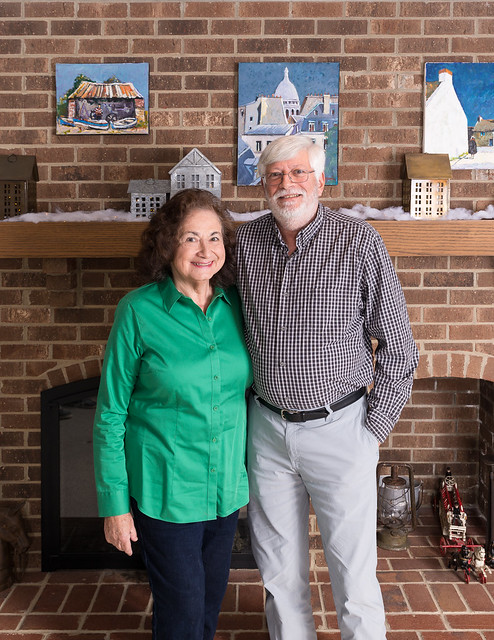gossamer
TPF Noob!
- Joined
- Dec 24, 2013
- Messages
- 234
- Reaction score
- 23
- Location
- New Jersey
- Can others edit my Photos
- Photos OK to edit
Hi, I have two Flashpoint XPLOR 600s, each with a 36" octobox and a D500 with a 24-70mm and plan on using it to take pictures at an event for a non-profit to be held in a fancy ballroom. I took a few practice shots today with my wife and can't figure out the proper lighting arrangement to avoid shadows behind the subject.
I have the two lights set up on either side of me, set about six feet high, angled down at the subject. The lights are set to TTL.
When I do this at the event, there will be an 8' backdrop ("step and repeat", like part of a press engagement) displayed in this space. I can have the subjects step away from the backdrop, but I don't believe far enough to completely eliminate the shadow.
I also realize in this sample picture that that angle is wrong and I should have had the camera set up lower, but was really just doing this to solve the shadow problem.
I've watched a few videos, but I haven't been able to find one that directly addresses this. Advice greatly appreciated.

I have the two lights set up on either side of me, set about six feet high, angled down at the subject. The lights are set to TTL.
When I do this at the event, there will be an 8' backdrop ("step and repeat", like part of a press engagement) displayed in this space. I can have the subjects step away from the backdrop, but I don't believe far enough to completely eliminate the shadow.
I also realize in this sample picture that that angle is wrong and I should have had the camera set up lower, but was really just doing this to solve the shadow problem.
I've watched a few videos, but I haven't been able to find one that directly addresses this. Advice greatly appreciated.












![[No title]](/data/xfmg/thumbnail/38/38261-db20f6f92ee8f0d4c5cf1536e308638b.jpg?1734172147)

